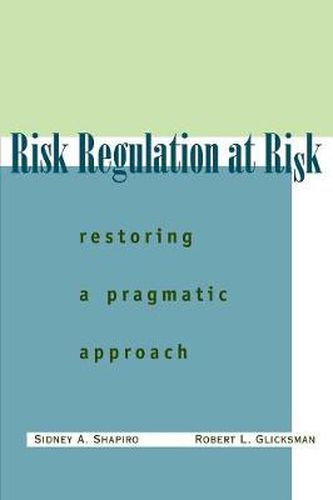Readings Newsletter
Become a Readings Member to make your shopping experience even easier.
Sign in or sign up for free!
You’re not far away from qualifying for FREE standard shipping within Australia
You’ve qualified for FREE standard shipping within Australia
The cart is loading…






In the 1960s and 1970s, Congress enacted a vast body of legislation to protect the environment and individual health and safety. Collectively, this legislation is known as risk regulation because it addresses the risk of harm that technology creates for individuals and the environment. In the last two decades, this legislation has come under increasing attack by critics who employ utilitarian philosophy and cost-benefit analysis. The defenders of this body of risk regulation, by contrast, have lacked a similar unifying theory. In this book, the authors propose that the American tradition of philosophical pragmatism fills this vacuum. They argue that pragmatism offers a better method for conceiving of and implementing risk regulation than the economic paradigm favored by its critics . This book provides a very astute and thorough examination of the complex issues raised by society’s desire to regulate risks preventively, before harm occurs. Shapiro and Glicksman[‘s]…elegantly developed framework will become a focal point for further debate.
- Christopher Schroeder, Duke University Risk Regulation at Risk is an original, thoroughly researched, clearly written, and eminently sensible response to the recent wave of scholarship that seeks to remake federal regulation of the environment, health, and safety…This book should become a standard work in the study of regulation for law and policy scholars, lawyers, policymakers, and anyone else with an interest in these important areas of federal regulation. - John S. Applegate, Indiana University School of Law
$9.00 standard shipping within Australia
FREE standard shipping within Australia for orders over $100.00
Express & International shipping calculated at checkout
In the 1960s and 1970s, Congress enacted a vast body of legislation to protect the environment and individual health and safety. Collectively, this legislation is known as risk regulation because it addresses the risk of harm that technology creates for individuals and the environment. In the last two decades, this legislation has come under increasing attack by critics who employ utilitarian philosophy and cost-benefit analysis. The defenders of this body of risk regulation, by contrast, have lacked a similar unifying theory. In this book, the authors propose that the American tradition of philosophical pragmatism fills this vacuum. They argue that pragmatism offers a better method for conceiving of and implementing risk regulation than the economic paradigm favored by its critics . This book provides a very astute and thorough examination of the complex issues raised by society’s desire to regulate risks preventively, before harm occurs. Shapiro and Glicksman[‘s]…elegantly developed framework will become a focal point for further debate.
- Christopher Schroeder, Duke University Risk Regulation at Risk is an original, thoroughly researched, clearly written, and eminently sensible response to the recent wave of scholarship that seeks to remake federal regulation of the environment, health, and safety…This book should become a standard work in the study of regulation for law and policy scholars, lawyers, policymakers, and anyone else with an interest in these important areas of federal regulation. - John S. Applegate, Indiana University School of Law